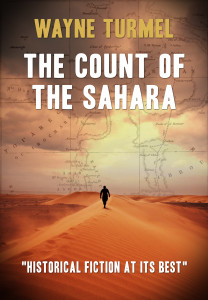Every year, the Naperville Writers Group publishes an anthology of members’ works called “Rivulets.” This story will be in the 2015 version, “Rivulets 27,” due out October 3. You can join us for the launch party. Click here for details.
It began as a writing exercise: Could I capture everything that goes through someone’s mind during just the 2 minutes of a horse race? I leave it up to you whether I’ve succeeded. Please enjoy.

On the Rail
“And they’re off, and Billy’s Buddy takes the lead off the rail followed by Pleazpleazpleaz, Penzance Pirate and BarTab…”
I love to hang over the rail and lean in just so I can feel them passing by, the vibrations running through the ground, along the rail and up my arms. God I love this game.
Broke even so far but this is the race, I can feel it in my bones…. One and four. That’s the exacta. Four’s the favorite, what’s the name… oh yeah, what’s it say on the ticket, Billy’s Buddy, and he looks like chalk—only real horse in the race. Runs like a champ on the outside, with that white paint sploosh on his forehead and the jock in all blue silks and already up by a nose. Velasquez—top jockey at the track so he gets the best rides, no secret there. Best riders, best rides, should be an easy winner against these dogs. Can’t make any money with favorites though.
Let’s check the slip, one and four for the exacta. Oh, Jesus, what’s the name of that…. RoundtheHorn, and I can get a really good look at the nag because he’s all by himself at the back of the pack. COME ON ALREADY, MOVE IT. Gimme a little love here for crying out loud.
“At the quarter pole, it’s Billy’s Buddy, Perfect Pitch a length back, with Bar Tab running on the outside…”
I can’t hear the rest because the perky little cheerleader in the floppy-ass hat with the, what is that a peacock feather? It ain’t Derby Day little girl, stop screaming. “Come on Bar Tab”, Sweet Jesus H Christ on a crooked crutch what is she six years old? I swear she just called him a “horsey”. Look at her, maybe twenty one, and all her brains inside her sweater. And that hipster boyfriend of hers, what a piece of work he is, a real mook.
“And RoundtheHorn trails going into the quarter pole…”
Come on, pick it up. It’s okay, I have’m boxed. Four horse can win long as one horse comes second… doesn’t pay as much but RoundtheHorn’s fifteen to one, so that’s four fifty plus the exacta…. We hit and it’s a mortgage payment. Make a move you frickin’ nag….
Look at that little dipshit she’s with. No one under forty should smoke cigars, it makes the little frat boy SOB look like he’s wearing his daddy’s clothes. Playing grownup and thinks he looks like Sinatra in that hat. Yeah, maybe Frank Junior. Jeez, I got concert T shirts older than this punk. And daddy’s got money, sure as God made little green apples. Why else would a little hottie like that…
Come on, one horse, you’re supposed to be a stalker. ‘Course so was Ted Bundy and look how that worked out….
Oh hell, they’re behind the scoreboard, check the screen. Those little circles with the numbers on them are moving around, changing position except for one… that little green circle with the 1 on it is still behind everyone else. You’re supposed to be a closer…. Coffee’s for closers, can I get you an espresso, you stupid can of dog food? Make a move damn you!
“And off the turn, it’s Billy’s Buddy with Bar Tab two lengths back, Penzance Pirate and Perfect Pitch”
I can’t hear the announcer for that girl screaming and bouncing around. She picked him ‘cause she liked the name. Well of course she did. And she’s proud of it, too. Sure didn’t look at his PP, and who bets a grey horse? Freakin’ amateur night. Didn’t daddy teach her nothing?
This is a numbers game, it’s science, and the numbers say he likes to close so make a move, Jose, come on, let him go. Let’s see, so Four horse wins and Round the Horn can comes second if he actually makes a FREAKING MOVE BEFORE DINNER. Numbers don’t lie, he ran a hell of a final quarter last time out. I can’t read my form right now ‘cause it’s all crumpled up in my fist and I’m beating it on the railing. Yeah, that’ll make him run faster, you dumbass.
“It’s Billy’s Buddy by a length, Penzance Pirate and Bar Tab with Booboo Kitty and RoundtheHorn moving on the outside…”
Come on Four you gotta hold on. I knew that jockey let you go too fast, you shouldn’t be front running… Velasquez knows better than that. Okay but one horse is making his move come on baby, that’s it… grind it, grind it….. Come on, one and four, one and four…..
She just won’t shut up, will she? And look at the way she looks at him. She wins on that little two dollar bet of hers and he’s in for a hell of a night. Hardly fair but that’s life, right? I could win the Triple Crown three times at ninety to one and never get a chick like that. Hell, even when I was hot Sheila never gave a…..
Alright about time, he made a move. The outside’s clear. Attaboy, what’s he sitting now, third? COMEON….
“And at the last turn, it’s Billy’s Buddy, BarTab and Round the Horn, followed by Penzance Pirate and BoobooKitty”
Make a move, make a move. Four horse, what are you doing? You can’t let up for Chrissakes . I know you got something left in the tank. Hold off that gray piece of….
“It’s BarTab and Billy’s Buddy, Billy’s Buddy and Bar Tab, neck and neck with RoundtheHorn and Penzance Pirate as they near the finish line…”
Come on, one and four, four and one I don’t care just finish it. Oh honey, give it a rest, your horse hasn’t got a….
“And it’s BarTab, with Billy’s Buddy and RoundtheHorn, followed by BoobooKitty, Penzance Pirate…..”
Is there a challenge? Let there be a challenge. Course not, God hates me, always has. Why toss me a bone now? Place and Show isn’t good for a damned thing. Crap, shouldn’t litter, I’ll drop it in the basket on my way to the window.
Sweet Jesus, what’s she gonna suck his face off? Let him breathe babygirl, he might need the oxygen later. And what’d she win, like nine bucks? What would she do to him if she hit a real long shot? Kid wouldn’t live to tell the tale.
Second and third…beat by a…’cause she liked the name…. Christ, amateurs are ruining this game.
Okay who’s up in the fifth?
You can find my new novel, The Count of the Sahara at my publisher’s website or at Amazon.com










